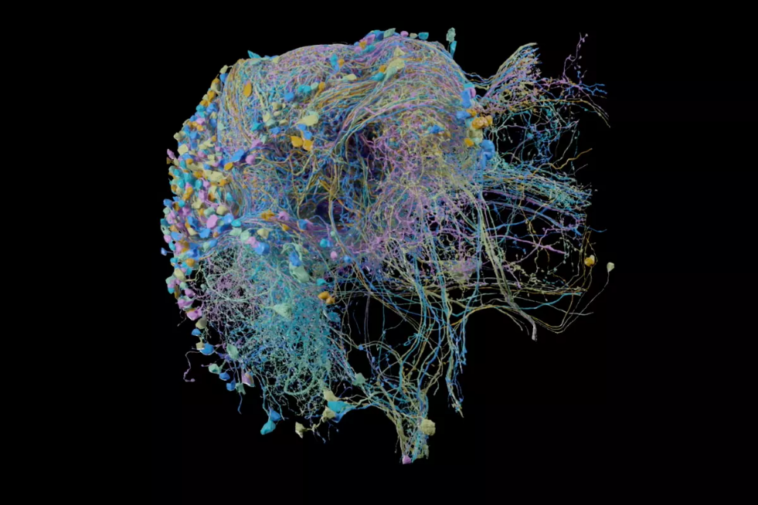Scientists of Google as well as the Janelia Research Campus located in Virginia have published the world very first and largest ever high-res map of the brain connectivity that is present in any animal. The publication shares the 3D model of a fruit fly’s brain that traces for 20 million synapses that are connecting the 25000 neurons.

This 3D brain model is a major breakthrough in the field of Connectomics; a field of study which uses the detailed imaging techniques for mapping the brain’s physical pathways. This 3D map, which covers almost the 1/3 of the brain of a fruit fly, has been named as Connectome. Before this, only one living organism’s brain has bee completely mapped and it was the roundworm species called C. Elegans.

Connectomics does have a mixed-up reputation in the world of science. The advocates of the field argue that this study actually helps in linking the physical pathways of the brain to particular behavior which is the main goal for the field of Neuroscience. As for critics, they say that this field of study still has to make any remarkable breakthrough and also the work for mapping the neurons of brain is a painstaking drain on the financial and manpower resources that can be better utilized on some other productive studies.

Mark Humphries, University of Nottingham’s neuroscientist said, “The reconstruction is no doubt a technical marvel. It will not in itself answer pressing scientific questions; but it might throw up some interesting mysteries.”
The 3D brain map made possible by the work of the FlyEM team working at Janelia and Google is no doubt an achievement of technical sorts, which is made possible through the laborious human and automated methods.
This process’s first step involved slicing the section of brain into pieces that were only 20 microns thick which is almost 1/3 of the width compared to human hair. Fruit flies are normally sued in field of Connectomics for brain studies because of their brain being simple and having a size of a poppy seed. Still, their brain offers many complex behaviors just like a courtship dance.

These brain slices were then boarded with streams of electrons emitting from the scanning electron microscope for imaging them. The data gathered through this imaging technique is comprised of nearly 50 trillion 3D pixels which are called Voxels that are then processed with help of an algorithm that works for tracing the pathways for every cell.

The work, even with the help of this algorithm provided by Google took the company almost 2 years as well as hundreds of thousands of the man-hours from competent scientists working at Janelia for proofreading this 3D map. The resulting study gave the proved route for about 20 million synapses with use of the VR headsets and the custom made 3D editing software. Despite all this, only the Hemibrian of the fruit fly was mapped. The entire brain of a fruit fly contains 100000 neurons while the human brain has 86 billion of them.
FlyEM team and Google have made this data from the study to available for download and viewing by anyone. They have also published a pre-print paper which describes the entire methodology for the study. As for more paper, they will be published in the coming few weeks.
Related Content
German government receives $887,000 bill from Microsoft due to extended Windows 7 security updates
Google giving away free of cost the $130 Stadia gaming kits to new subscribers of Verizon Fios
iPad Pro is now able to run the Fortnite at 120 frames per second






